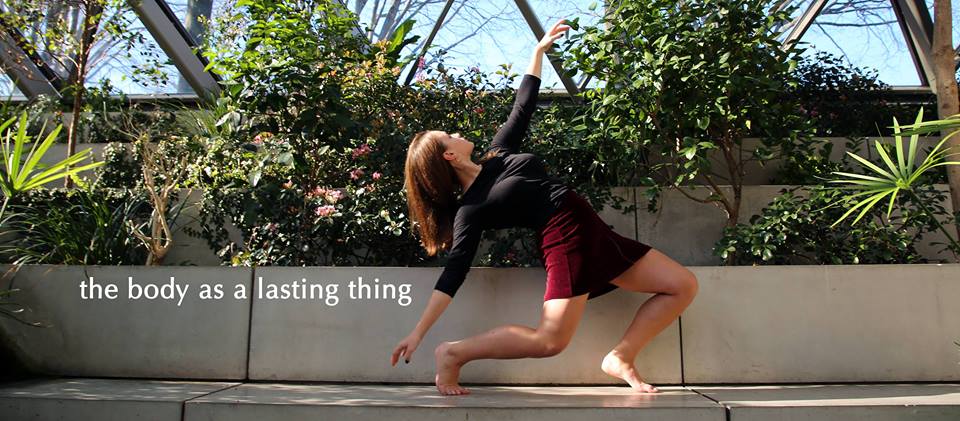
News
Cambridge Residents Slam Council Proposal to Delay Bike Lane Construction

News
‘Gender-Affirming Slay Fest’: Harvard College QSA Hosts Annual Queer Prom

News
‘Not Being Nerds’: Harvard Students Dance to Tinashe at Yardfest

News
Wrongful Death Trial Against CAMHS Employee Over 2015 Student Suicide To Begin Tuesday

News
Cornel West, Harvard Affiliates Call for University to Divest from ‘Israeli Apartheid’ at Rally
Poetry Meets Dance in ‘the body as a lasting thing’

In a performance titled “the body as a lasting thing,” Anna K. Antongiorgi ’19 combined poetry with dance at the Leverett Library Theater last Friday and Saturday.
According to the show’s program, the project aimed to combine poetry about the human body — written by Antongiorgi for her English senior thesis — with “actual bodies.” Over the course of the hour-long performance, the poetry and choreography combined to explore themes of what the event description called “physicality, anatomy, and dance.”
A screen to the left of the stage displayed the poems in full as performers clad in neutral tones — pastel blues, grays, and blacks — moved across the floor. Performer Isabel Wu ’20 commented on how the poetry merged with the dancing.
“I think it’s really interesting because it’s not a direct mapping of poetry to choreography. I think the more I read the poems and the more I watched the show and practiced on my own, I kind of understood where the movement was coming from,” Wu said.
During each routine, a poem flashed across the screen just long enough for the audience to read it while also watching the dance. Dancers then moved from their seats at the sides of the theater to center stage while other dancers watched. After finishing a routine, the dancer returned to the sides of the room in time for the next poem to appear. At times, the other seated dancers extended comforting hands to those performing. Although most pieces were solos, some, such as “us trinas” and “a ballet class in socks” incorporated a few or all of the performers.
After receiving Antongiorgi’s poems in January, the dancers began working on the choreography. Daniel P. Rivera ’20, one of the performers, said that not long after returning from break, the dancers began creating their solos “kind of on the spot.”
The performance began with “kind” and “irony embodied or thank you,” two deeply personal poems that touched on Antongiorgi’s own insecurities as well as her friendships.
“I over think digestion,” Antongiorgi confessed in the first poem. “We are comedians in sorrow. I’m grateful,” she wrote in the second.
The fourth poem of the evening, titled “us trinas,” was the first to be read aloud rather than displayed on the screen — and the first to discuss dance explicitly. The poem deals with the toxicity in the dance world. A voice read one of the opening lines — “if the skin touches the fabric, you’ll need to lose it” — as the three dancers stood with their backs turned to the audience and hands firmly placed on their hips, shifting their weight from one foot to the other.
The evening ended with a poem titled “resurface,” which particularly resonated with Devonne D. Pitts ’21, an audience member who found it to be “really powerful.”
“I think that there were a lot of emotions flying in the space and they ended on a happy note,” Pitts said.
Want to keep up with breaking news? Subscribe to our email newsletter.
